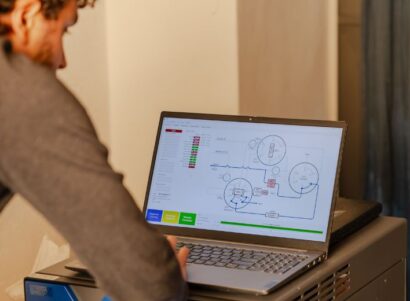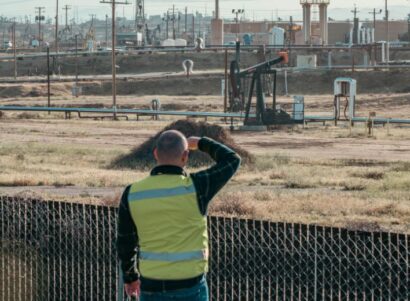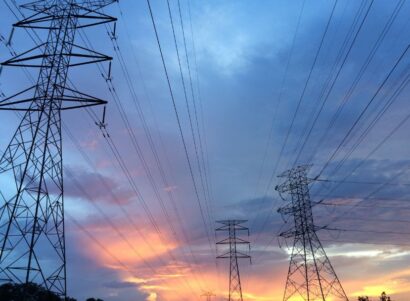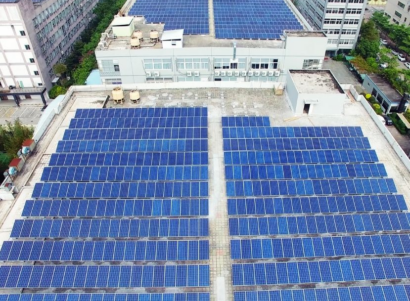Following strong directives from the Biden administration to address climate change, the United States Congress is on the verge of making historic investments to reshape our nation’s infrastructure. The US Senate is planning to vote on a $1 trillion package that would enable unprecedented investments to adapt our energy, transportation, water, and information systems in response to climate change. At the same time, many state governments are already taking action: nearly half of all US states have set binding targets to slash their carbon emissions.
These federal and state climate policies create an opportunity to simultaneously address historic pollution and economic burdens imposed by our existing energy systems. For over a century, the United States has powered its homes and vehicles with fuels that damage the climate, pollute the air, and emit health-harming air pollutants into disproportionately poor, black, and brown neighborhoods. Our highways divide communities and were built to segregate. Our gas-powered appliances pollute at levels that would be illegal outdoors. Explicitly designing climate policies to safeguard public health, protect air and water, and proactively invest in historically under-resourced communities, can help address long-standing inequities in our current energy system.
To identify strategies to maximize the health, environmental, and social benefits of decarbonization, PSE Healthy Energy analyzed pathways to meet 2020-2050 emissions targets in three Western states: Colorado, Nevada, and New Mexico. In all three states, PSE researchers:
- Sought to better understand who shoulders the public health burdens of our energy system by identifying communities exposed to multiple sources of pollution from fossil fuel production and use;
- Identified which households might struggle the most to pay their residential energy bills, buy fuel for their cars, and afford access to clean energy technologies by analyzing energy and fuel cost burdens; and
- Discussed high-yield strategies that reduce carbon emissions while also providing additional benefits, such as reducing health-damaging air pollution, alleviating energy cost burdens, and increasing climate resilience.
Across all three states, we found that targeting emissions reductions and clean energy access in pollution- and cost-burdened communities supports significant public health and economic benefits. However, to achieve these benefits, public policy must integrate equity from the beginning. Additionally, affected communities must be engaged throughout the policymaking process to help identify socioeconomic and pollution burdens of concern and develop effective strategies to mitigate them.
Specifically, we found that an equity-focused approach to decarbonization can:
Address the Disproportionately High Costs Borne by Millions of Americans
Across all three states, we identified groups that spend an outsized portion of their income on home energy bills and vehicle fuel. These excess costs are shouldered by millions of Americans of varying backgrounds, but we identified several groups consistently overburdened by energy costs across states. These include low-income communities, communities of color, renters, rural populations, and other groups that—despite typically using less energy and driving shorter distances on average—spend a significantly larger percentage of their income on average to power their homes and fuel their cars.
Our findings show that carbon-friendly alternatives like solar panels, energy-efficient appliances, and electric vehicles can reduce bills for these communities in the long run. However, these same communities have historically adopted clean energy technologies at rates that are much lower than average, largely due to prohibitive upfront costs and other barriers to entry. Designing financing that provides upfront capital or developing public policy that encourages more accessible options, like community solar and public transit, can reduce carbon emissions while lowering energy and fuel costs for groups that have historically paid more than their fair share.
Result in Significantly Greater Public Health Benefits Than a Net Emissions Reduction Approach
Strategies that strictly seek to generate the greatest carbon reduction per dollar spent don’t necessarily mean the biggest bang-for-your-buck when public health and energy affordability benefits are also considered. For example, the sheer number of passenger vehicles burning gasoline makes them ripe for decarbonization efforts.
Freight trucks on the other hand account for a smaller portion of vehicle miles traveled but contribute to an outsize portion of health-damaging air pollution along interstate highways, where communities of color and low-income neighborhoods are frequently located. Prioritizing these vehicles for electrification can provide high-yield health benefits in addition to carbon reduction, especially in the communities most burdened by pollution.
Similarly, a carbon-only approach to the building sector might exclusively target electrification of natural gas appliances while leaving out the largely rural households burning unconventional fuels like wood or coal. These homes may represent a small portion of all residences and be responsible for less greenhouse gas emissions than those burning natural gas, but they generate a disproportionate amount of in-home air pollutants, especially fine particulate matter. Prioritizing electrification of these homes, alongside gas-powered homes, can enhance public health benefits that may go unaddressed if reducing carbon emissions is the sole focus.
Result in Significantly Greater Public Health Benefits Than a Net Emissions Reduction Approach
Strategies that strictly seek to generate the greatest carbon reduction per dollar spent don’t necessarily mean the biggest bang-for-your-buck when public health and energy affordability benefits are also considered. For example, the sheer number of passenger vehicles burning gasoline makes them ripe for decarbonization efforts.
Freight trucks on the other hand account for a smaller portion of vehicle miles traveled but contribute to an outsize portion of health-damaging air pollution along interstate highways, where communities of color and low-income neighborhoods are frequently located. Prioritizing these vehicles for electrification can provide high-yield health benefits in addition to carbon reduction, especially in the communities most burdened by pollution.
Similarly, a carbon-only approach to the building sector might exclusively target electrification of natural gas appliances while leaving out the largely rural households burning unconventional fuels like wood or coal. These homes may represent a small portion of all residences and be responsible for less greenhouse gas emissions than those burning natural gas, but they generate a disproportionate amount of in-home air pollutants, especially fine particulate matter. Prioritizing electrification of these homes, alongside gas-powered homes, can enhance public health benefits that may go unaddressed if reducing carbon emissions is the sole focus.
Increase Public Safety for Communities That Face the Most Risk from Extreme Weather
No matter how successful the upcoming carbon reduction efforts are, some climate change is inevitable—and it’s already happening. The Western states included in our analysis are increasingly faced with the dangers of more frequent and intense wildfires, hotter and longer extreme heat events, and more frequent power outages. Other states throughout the country face similarly intensifying risks from flooding, hurricanes, and other natural disasters.
As climate change bears down, the risks are growing for all, but they are particularly acute for some. Low-income Americans will increasingly wonder whether they can afford to pay the bills as they are forced to crank the air conditioning higher and longer. Rural Americans will struggle to access critical information when the power goes out during fire season. Older Americans living in aging housing will be forced to contend with the health consequences of dangerous air pollution from wildfires more frequently.
Targeting investments that reduce carbon emissions, while enhancing resilience, can alleviate these concerns by improving access to reliable, affordable energy. Local microgrids or rooftop solar and battery storage, for example, could provide increased bill stability and energy reliability in all of the above scenarios, assuring that the lights stay on during disasters for those who need it most. Subsidizing or otherwise incentivizing initiatives like these would do more than just slow climate change, they would make us stronger against it.
Building Equity-Focused Climate Strategies
These are just a few examples of how we can leverage our investments in decarbonization to provide health and economic benefits and right our energy system’s historic wrongs. Critically though, these win-win scenarios are not a given. Without deliberate integration of equity, health, and resilience considerations, we run the risk of retiring some of the most polluting power plants last, increasing the energy bills of those who already most struggle to afford them, or otherwise exacerbating existing inequities. Intentionally designing our policy strategies—at local, state, and federal levels—to integrate equity now, rather than playing cleanup later, is key to assuring that this pivotal transition meets its promise for all.
To learn more about our research on bringing health and equity to decarbonization, visit our Western States Deep Decarbonization page.













